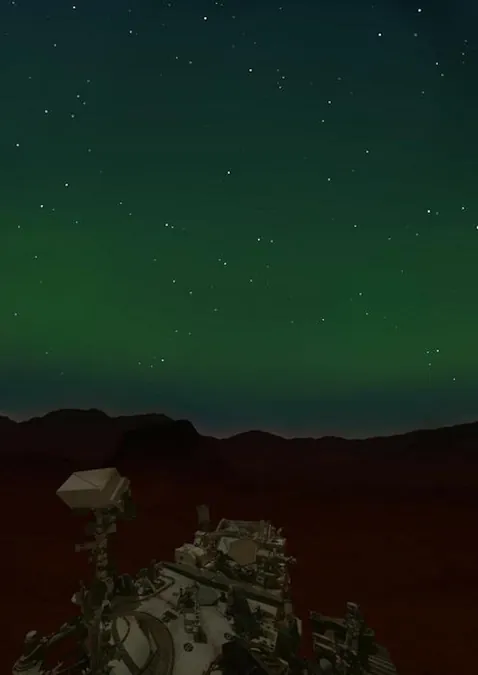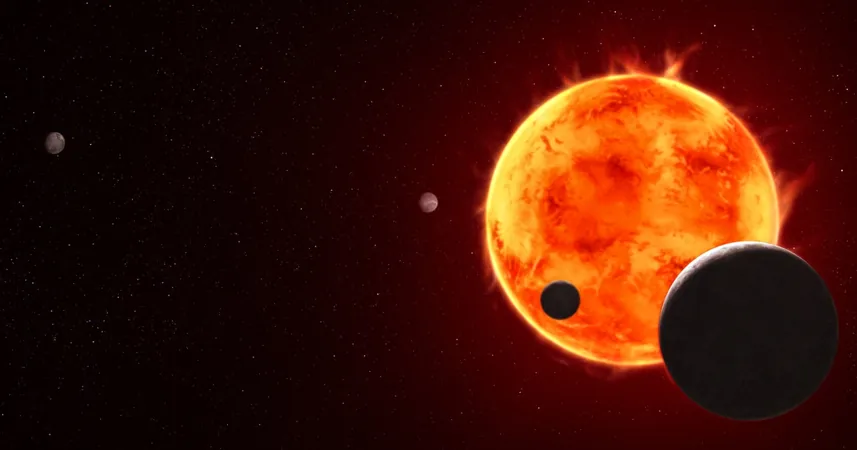
Unveiling Mars' Mystical Green Auroras: A Breakthrough in Predictions!
2025-09-12
Author: Jia
Revolutionary Discoveries from Mars!
In a thrilling new chapter of space exploration, NASA’s Perseverance rover has not only captured its first visible light aurora on Mars in 2024 but has now successfully photographed a second stunning display! Dr. Elise Wright Knutsen and her team at the University of Oslo have developed an innovative method to predict when these otherworldly northern lights will shimmer across the Martian sky.
The Science Behind the Spectacle!
Unlike Earth’s polar auroras confined by the planet's magnetic field, Martian auroras can flare up anywhere on the dark side of the planet. The phenomenon occurs when charged particles from a coronal mass ejection erupt from the Sun, colliding with the thin Martian atmosphere. This interaction causes the oxygen atoms high above the surface to emit a mesmerizing green glow, potentially visible to astronauts on future missions!
Capturing the Spectacle: A Challenge!
The Perseverance rover’s Mastcam-Z captured a series of images: two striking auroras on March 18 and May 18, 2024, contrasted with nights lacking the auroral magic. But the quest for these images was anything but straightforward. The team had to plan their observation strategy three days in advance, needing to upload commands to Perseverance’s cameras without knowing whether a solar storm would be forthcoming. Out of eight attempts between 2023 and 2024, they succeeded just twice—each success revealing hard-earned insights into what conditions ignite Martian auroras.
A Matter of Survival for Future Explorers!
While the visuals are breathtaking, they serve a critical purpose beyond aesthetic wonder. The dangerous solar radiation that fuels these auroras poses substantial risks for astronauts. A reliable forecasting system is essential to protect future explorers from unwelcome exposure to high-energy particles during solar storms. This need underscores the real significance of Dr. Knutsen's study—a potential lifeline for astronauts navigating the hazards of the Martian environment.
Building a Vital Database!
The ongoing research is not just about capturing enchanting images; it’s about forging a comprehensive database combining surface-level observations with ultraviolet data collected from orbiting spacecraft. Each new aurora observation enriches our understanding of how these phenomena operate on a planet devoid of a global magnetic field, with implications that could transform our grasp of space weather across the entire Solar System.



 Brasil (PT)
Brasil (PT)
 Canada (EN)
Canada (EN)
 Chile (ES)
Chile (ES)
 Česko (CS)
Česko (CS)
 대한민국 (KO)
대한민국 (KO)
 España (ES)
España (ES)
 France (FR)
France (FR)
 Hong Kong (EN)
Hong Kong (EN)
 Italia (IT)
Italia (IT)
 日本 (JA)
日本 (JA)
 Magyarország (HU)
Magyarország (HU)
 Norge (NO)
Norge (NO)
 Polska (PL)
Polska (PL)
 Schweiz (DE)
Schweiz (DE)
 Singapore (EN)
Singapore (EN)
 Sverige (SV)
Sverige (SV)
 Suomi (FI)
Suomi (FI)
 Türkiye (TR)
Türkiye (TR)
 الإمارات العربية المتحدة (AR)
الإمارات العربية المتحدة (AR)